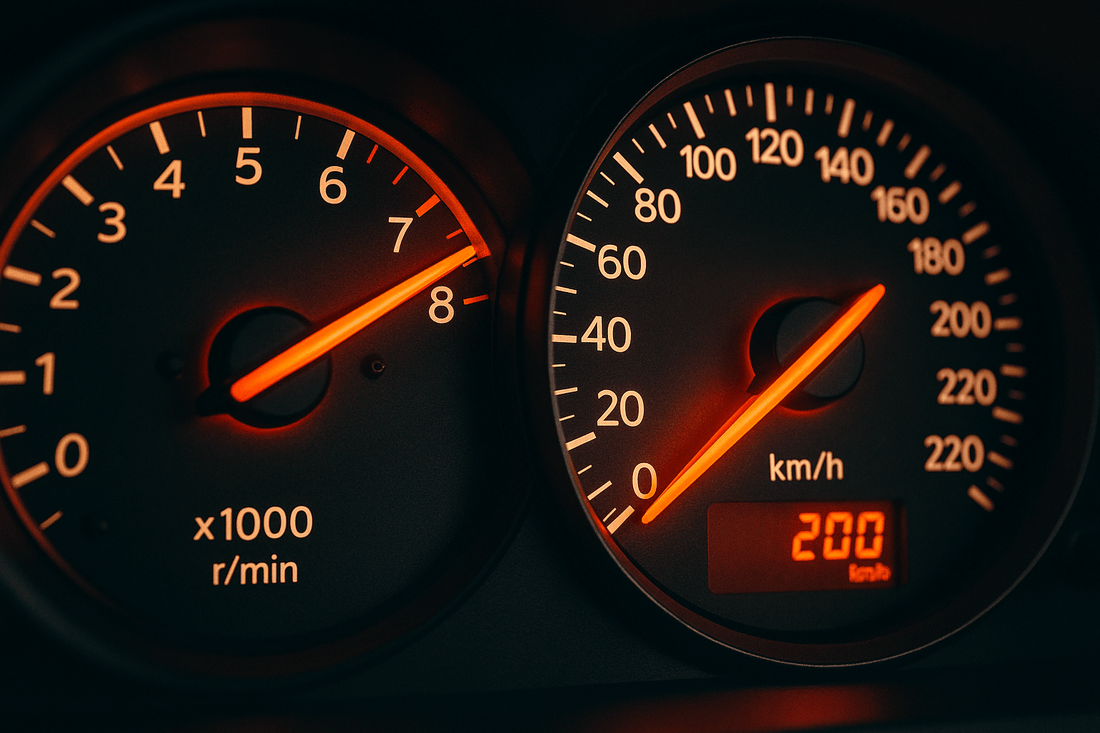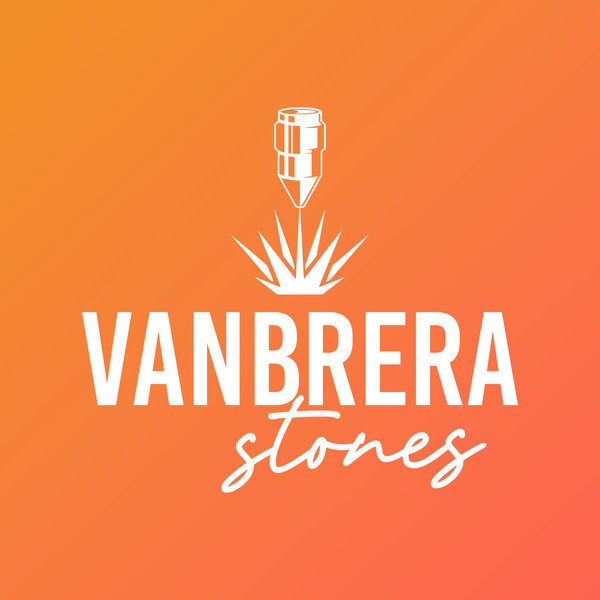
The Real-World Speed & Power Differences Between 20W, 30W, 50W, and 100W Fiber Lasers
If you’ve ever wondered how much faster a 30W is than a 20W—or what a 50W or 100W actually buys you in production time—this guide is your pit stop. We’ll cover how fiber laser power translates to speed, depth, and cycle time, then share practical engraving tests you can replicate on your own rig.
TL;DR
-
More watts = more usable speed and/or fewer passes, but not a perfect 1:1 scale because of pulse energy, frequency, spot size, and material limits.
-
Expect ~30–50% faster going 20W → 30W, ~2× faster 20W → 50W (on many metals), and ~3–4× faster 20W → 100W for deep marks—when dialed in.
-
For deep metal engraving (e.g., 1–2 mm), 50W and 100W are in a different league. For high-contrast surface marks (anodized aluminum, coated metals), the gains are smaller because you’re often scan-speed-limited by contrast/edge quality, not raw power.
What “More Power” Actually Changes
A fiber laser’s impact comes from two knobs:
-
Average Power (W): Your “budget” of energy per second.
-
Pulse Energy (mJ): Energy per pulse = (Average Power) ÷ (Frequency). Higher pulse energy drives better ablation/penetration per hit.
Rule of thumb: If you hold frequency and line spacing steady, higher wattage lets you:
-
Increase speed at the same quality, or
-
Keep speed the same and reduce passes (go deeper/faster), or
-
Run a higher frequency to smooth edges while maintaining penetration (because you can afford it).
Test Setup You Can Replicate
Use these to compare 20W vs 30W vs 50W vs 100W under realistic conditions.
Materials
-
Stainless Steel 304, 1.5 mm (deep engraving + readability)
-
Anodized Aluminum, black (high-contrast marking)
-
River Stone / Slate (your bread-and-butter; texture + readability)
Lens & Focus
-
F-θ 110 × 110 mm lens (typical detail lens). Keep focus perfect (shim to ±0.1 mm).
Common Baseline (start point for the 20W)
-
Hatch: 0.04 mm
-
Frequency: 30 kHz
-
Pass overlap: Cross-hatch (0° / 90°)
-
Fill size: 20 × 20 mm test square (for time apples-to-apples)
-
Air assist: Off on metals; gentle air on stone to clear dust
-
Goal: Deepness for steel (mm), uniform contrast for anodized, crisp white on stone without chipping
You’ll then scale speed and/or passes for higher wattages to hit equivalent visual quality (for anodized/stone) or target depth (for steel).
Suggested Scaling Strategy
When jumping up in power, try this first-pass math:
-
Keep hatch (0.04 mm) and frequency (30 kHz) the same.
-
Scale mark speed proportional to wattage × 0.7 correction for real-world losses.
-
Example: 20W → 30W speed ≈ 1.5× * 0.7 ≈ 1.05×–1.2× (then tune).
-
20W → 50W: 2.5× * 0.7 ≈ 1.7×
-
20W → 100W: 5× * 0.7 ≈ 3.0–3.5×
-
Why the 0.7? Materials don’t scale linearly; heat flow, plume shielding, and spot chemistry get in the way. Start conservative; push until the edge quality falls off, then back down.
Results: Representative Numbers (You Can Beat These With Tuning)
A) Stainless Steel—Deep Engrave to 1.0 mm Depth (20 × 20 mm fill)
| Laser | Speed (mm/s) | Power (%) | Hatch (mm) | Freq (kHz) | Passes | Total Time | Notes |
|---|---|---|---|---|---|---|---|
| 20W | 300 | 95 | 0.04 | 30 | ~120 | ~42–48 min | Hot, slow, lots of recast; clean between sets of 20 passes |
| 30W | 360–420 | 95 | 0.04 | 30 | ~80–90 | ~28–32 min | Similar edge quality, fewer passes |
| 50W | 500–600 | 90 | 0.04 | 30 | ~45–55 | ~14–18 min | Clearly faster; crisper floors if you add a light finishing pass |
| 100W | 900–1100 | 80 | 0.04 | 30–40 | ~20–28 | ~6–10 min | Big jump. Consider 35–40 kHz for smoother walls |
For 2.0 mm depth, roughly 2–2.2× the time in the same column (or use tighter hatch and more frequency). Heat management becomes the limiter; short cool-down pauses every 10–15 passes help quality.
B) Anodized Aluminum—High-Contrast Mark (20 × 20 mm fill, “best-look” settings)
| Laser | Speed (mm/s) | Power (%) | Hatch | Freq | Passes | Total Time | Notes |
|---|---|---|---|---|---|---|---|
| 20W | 1500–2000 | 35–45 | 0.05 | 30–40 | 1–2 | ~18–30 sec | Already fast; higher power doesn’t help much |
| 30W | 1800–2400 | 30–40 | 0.05 | 30–40 | 1 | ~12–20 sec | Slight gain |
| 50W | 2200–3000 | 25–35 | 0.05 | 30–40 | 1 | ~8–14 sec | Faster fills |
| 100W | 3000–4000 | 20–30 | 0.05 | 30–50 | 1 | ~5–10 sec | Watch for haloing if frequency too high |
On anodized, you’re contrast-limited more than power-limited. The step from 20W to 50W is nice, but it won’t feel like turbo mode the way steel/stone deep engraves do.
C) River Stone / Slate—Crisp “White” Engrave (20 × 20 mm fill)
| Laser | Speed (mm/s) | Power (%) | Hatch | Freq | Passes | Total Time | Notes |
|---|---|---|---|---|---|---|---|
| 20W | 300–400 | 85–95 | 0.04 | 30–37 | 1–3 | ~40–120 sec | Clean, slightly slower on smoother stones |
| 30W | 450–520 | 80–90 | 0.04 | 30–37 | 1–2 | ~25–80 sec | Same look, fewer passes |
| 50W | 700–850 | 70–85 | 0.04 | 30–37 | 1–2 | ~15–50 sec | Noticeably faster; less risk of micro-chipping if frequency ~30–33 |
| 100W | 1100–1400 | 60–75 | 0.04 | 30–37 | 1 | ~10–30 sec | Very fast fills; test first—some stones “brown” if overheated |
Why Your 50W Feels “Way” Faster Than 20W (Even If Math Says Otherwise)
-
Higher pulse energy ceiling: At practical frequencies, 50W delivers more energy per pulse than a 20W, so each hit bites deeper.
-
Better tolerance for speed increases: You can raise speed without starving the ablation threshold.
-
Thermal headroom: More power lets you “waste” some energy on smoothing (slightly higher frequency or a finishing pass) and still finish sooner.
When 100W Makes Sense
-
Deep metal engraving (tooling, dies, serials at 1–2 mm+) where cycle time is money.
-
Large area fills (badges/plates) where the fill time dominates.
-
Harder alloys (e.g., 17-4 PH, some tool steels) where a 20W/30W struggle to stay above threshold at good speeds.
If you mostly do small decorative marks on anodized/aluminum or light stone work, 50W is a very strong sweet spot.
Fast Tuning Playbook (Use This In LightBurn)
-
Lock focus and run a speed sweep: 200 → 1400 mm/s (metals lower), same power/hatch/freq. Pick the highest speed that still gives the look.
-
Frequency tweak: Start 30 kHz. If edges look rough, try +5 kHz; if contrast drops or halo appears, back down.
-
Hatch spacing: 0.04 mm is a reliable default for detail. For faster fills on anodized, 0.05–0.06 mm can still look great.
-
Pass strategy: Many thin passes > few hot passes for metals. On stone, 1–2 decisive passes usually look cleaner.
-
Cooling pauses (metals): Every 10–15 passes, pause 20–40 seconds to reduce recast and warping.
Production math (so you can price with confidence)
-
Cycle time ∝ (Area / Speed) × Passes (ignoring jump/turn overhead).
-
Going from 20W → 50W often cuts deep-engrave cycle time by ~40–60% after tuning.
-
If you sell a 4″ stone that takes 40 min @ 20W and you bring it to 18 min @ 50W, you just unlocked ~2.2× throughput on that SKU.
Ready-Made Test Files (Layout)
Create three LightBurn projects with a 20 × 20 mm square and text label underneath:
-
Steel_DeepEngrave.lb – set a target depth (1.0 mm).
-
Anodized_Contrast.lb – target max contrast, best edge.
-
Stone_White.lb – target bright, clean white.
Inside each project, make four layers named 20W, 30W, 50W, 100W with the table settings above. Duplicate the square per layer so you can run them side-by-side and time each run.
Common Pitfalls (and quick fixes)
-
“Why is my 50W not 2.5× faster?”
You’re frequency-limited (too high), hatch too tight, or over-scanning a lot of empty space. Start at 30 kHz, 0.04 mm, trim your fill region, and increase speed first. -
Melted edges / burrs on steel
Lower frequency a bit (25–30 kHz), add a final low-power cleanup pass, or insert cool-down gaps. -
Blotchy stone
You’re too hot or out of focus. Drop power ~10–15%, keep frequency ~30–33 kHz, and verify focus with a thin shim test.
Final Thoughts
-
20W: excellent for learning, light marks, and tiny details.
-
30W: nice bump; worth it if budget is tight.
-
50W: the sweet spot for real production—big time savings on steel and stone.
-
100W: go here for deep metal, large plates, or when minutes per job really matter.
